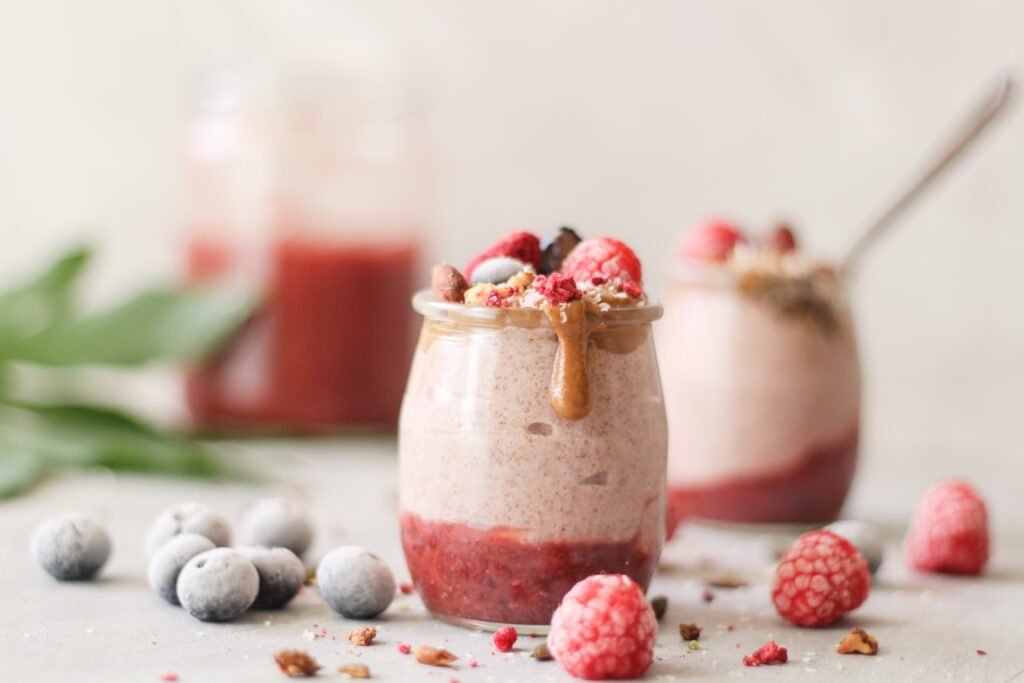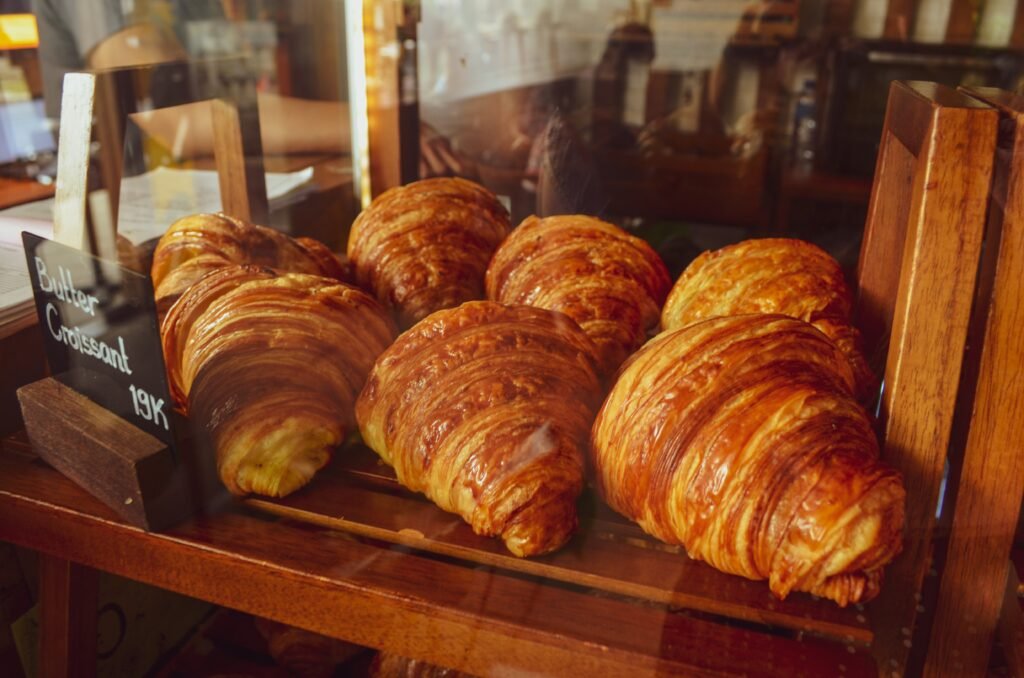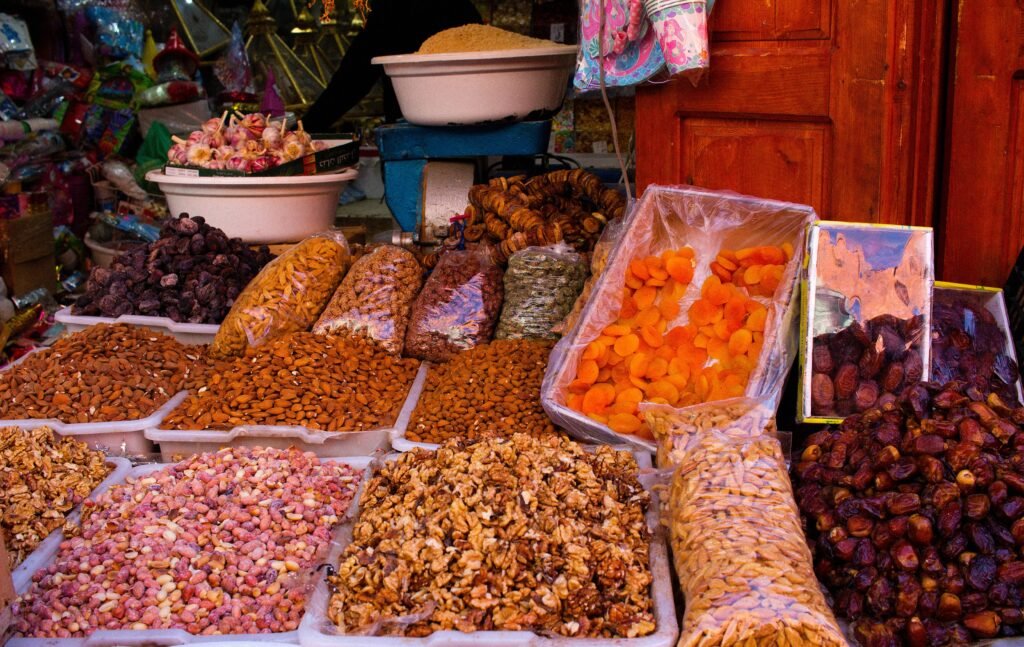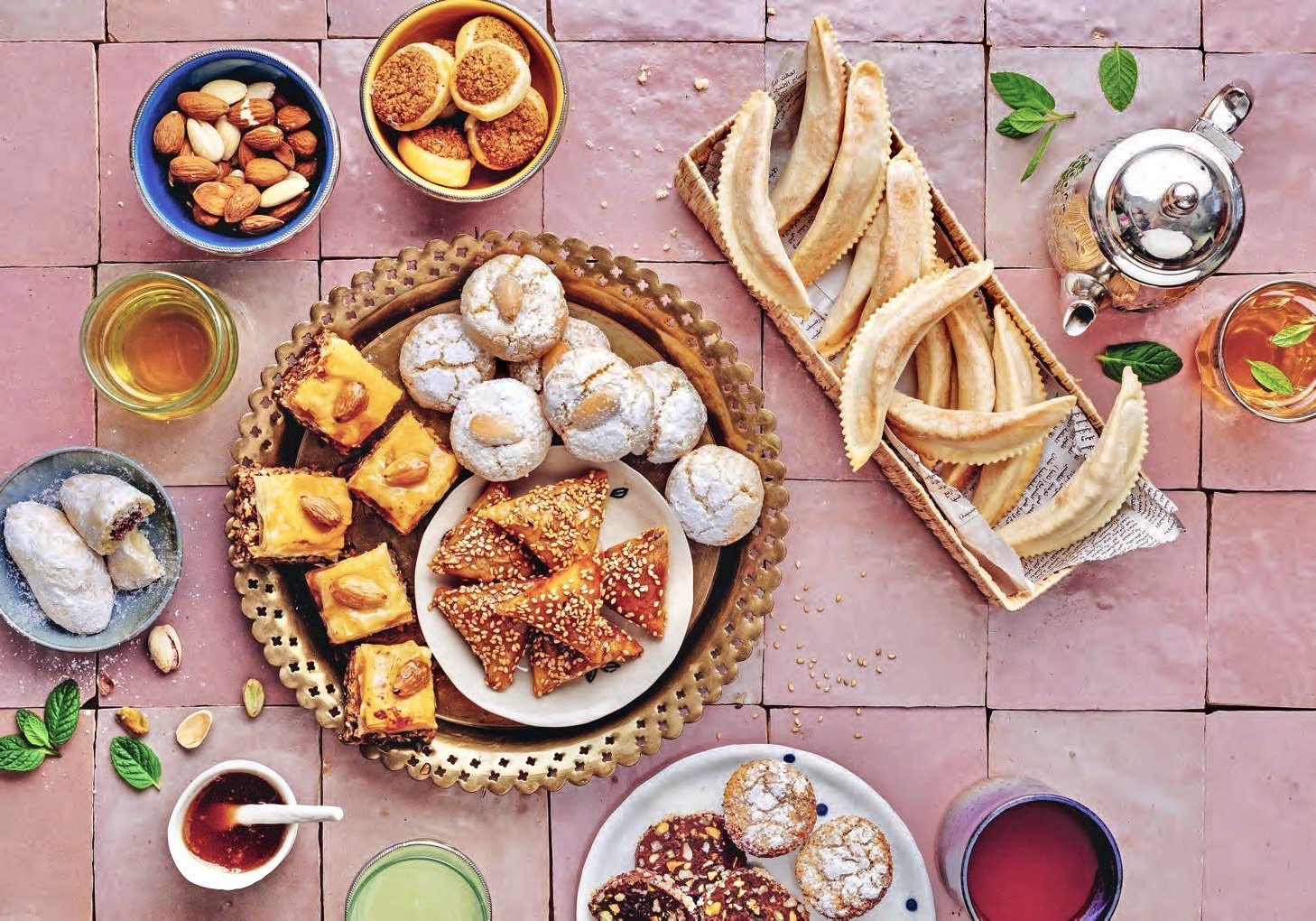Going nuts on Drinks and Sweet stuff in Morocco
From nougat to sfooff, from avocado juice to za3za3, and everything nutty. A new country. A new city. Where to start. Are you ready for a little food adventure?
1 Juice Shops
There are so many little hole-in-the-wall shops which are daunting to try because they are unfamiliar. So let’s start with a good old juice shop – one of the shoebox businesses which sell juice, sometimes even just orange and lemon juice, with or without sugar. And in season, pomegranate or grenadine juice. There are also many little shops with a whole range of juices and places you can sit. Here are some:
Mango juice – a favourite of mine!
Dragon fruit juice – not a local fruit, but exotic and available in season.
Avocado juice – mixed with a bit of milk. A thick drink and surprisingly good!
Banana juice – what I call a banana smoothie.
Pomegranate juice – sweet and sour, often at an orange juice stand. I love them!!! And so good for you!
Almond juice – fresh ground almonds blended with milk in the same way as a banana smoothie.
Panache – a thick drink, a mix of several juices, very good and surprisingly filling.
and a za3za3.

Wait. What!?
I think they are worth it just for their name. That is written in Moroccan Arabic, or Darija, the 3 being a very throaty sounding ‘a’ like in ‘fat’.
A za3za3 is a fruit drink with a mix of juices, very thick – not unlike a panache. But it has the extra treat of being loaded up with pieces of fresh fruit on top, a bit of cream and maybe a KitKat, an Oreo or some other sweet treat. When I have to wait a bit for a meal, if my visit to a cooking event at Blue Door Cuisine is still a little way off but I’m already hungry, this makes the perfect snack. And mostly they are full of good stuff. I challenge myself to pick my way through the fruit to get to the juice underneath without anything overflowing.
There is an excellent location where you can sit and watch the sea. It’s up on the Boulevard across from the end of Sur Magasin (where the cannons are), called La Gondola. Another I like to use (especially at dawn) is in Gran Socco facing the fountain. If you look from Cinema Rif across to the street with the archway over it, it’s just to the left of that archway with le petit dejeuner written above it.
All these places will charge maybe 20-30dhs for what seems to be a bucket load of fruit (a little more for the za3za3 – but who can resist trying something with a name like that).
 2 The Boulangerie and the Sweet Stuff
2 The Boulangerie and the Sweet Stuff
Being an ex-French colony, it is hardly surprising that there are loads of fancy bakeries full of French style pastries. Not only can you buy your Moroccan breads and good French sticks, but there are a range of pastries, and also Moroccan savoury snacks. They are usually nicely set out so you can easily point to the treats you want to try.
Besides a range of croissants, chocolate filled pastries and palmiers, there are also the Moroccan savoury pastries. Usually wrapped in triangles of flakey pastry with fish or chicken inside, more recently spinach and cheese, they are called b’riwat.
There is a big French bakery just inside the arched street (Rue d’Italie) off Gran Socco – Patisserie Bab al Medina – which sells all of these, including both sweet and savoury croissants and pastries.
Or if you head down that same street (Rue d’Italie) to Abou Tayssir and Café Colon across from Cinema Alcazar – just before you reach them head down the steps in the alleyway to your right (there are fruit shops on the corner) – at the bottom just on your left there is a small place.
Not only are the pastries cheap and good quality, but they have an interesting range to try out. Some look like spring rolls, some have bechamel inside them…
Go in, ask for a few different ones – they make for a nice little snack treat. Take them to Café Colon, Cinema Rif, or Gran Café de Paris with its 1920s colonial atmosphere and try them out with some mint tea or coffee.
If you’ve a sweet tooth, or just in the mood, the boulangerie also have a range of the fancy sweet French style cakes to choose from.
3 The Sweet Stuff, Moroccan Style
There is a range of pastries which are special to Morocco, especially around Ramadan – the al mo3asarat. This includes all of the flour pastries which are saturated in honey and/or syrup. The most common of these are the chebakia, a cinnamon and spice flavoured tangle of pastry ribbon which is fried and then doused in honey. As tangled a mess at it appears to be, it is in fact a very specifically designed knot.
There are also the b’riwat which can be both savoury, or sweet. They are all the ones which come in a triangular package of pastry.
Mkrout is a diamond shaped date-filled pastry, also covered in syrup or honey.
A very specific Moroccan sweet which is especially around during Ramadan is sfooff. It isn’t even solid. It can be anywhere from a paste to a dry and crumbly mixture. Both need a spoon to eat it with. It is made from roasted almonds which are ground up together with whole grain flour, sesame, seeds, butter, nutmeg, cinnamon, orange blossom, rose water and honey. It, and anything with dates in is are actually Jewish in their origins. Morocco has a very strong Jewish history and influence which is often overlooked.
A couple of others which fit in here are the halva and nougat. Halva originates from Turkey, and is a solid ‘cake’ of sesame, often with pistachios or other nuts embedded. In Arabic the word halva is a generic word which refers to all sweets and biscuits.
And there is no overlooking the dozens of tiny shops loaded with giant blocks of nougat. Nougat was of Persian origin, but it has become a very popular Moroccan treat. These shops also have a big range of nuts made into a cake bound together by a soft toffee. You can often buy tiny fingers of them in the little shops or off street vendors – the perfect snack on the way home for 2dirhams. Nothing like a bit of protein from the nuts with a nice little sugar hit to boost your energies.

4 Go Nuts in Morocco
When you see a Moroccan biscuit/pastry shop, do not walk past! Especially if you love nuts. The Moroccan biscuits/cookies are all made from nuts – mostly almonds, and peanuts – the poor man’s almonds. Others are made from hazelnuts and pistachio. If you love nuts, Morocco is your Mecca.
These shops are filled with all sorts of shapes which are often highly decorated. One of the most common is the crescent shape which has the most amazingly intricate patterning on it. But please stop and buy a selection – I can never decide which ones I want to try next. There are also a lot of date filled treats in Morocco – here they can even be in the bread shops as a little extra. Frequently when I stop at Café Colon I will have a couple of these date filled pastries with my tea or coffee or freshly squeezed orange juice. (maybe a lemon juice if I’ve over-indulged on a late night).
5 Non-Moroccan Moroccan Treats
This last bunch is not very Moroccan, but you also see them everywhere. They are the varieties of baklava from Turkey. Originally a sweet from the Ottoman empire, hence found all through the regions of the Eastern Mediterranean – Greece, Turkey, Syria, Lebanon…
They are syrup-doused, either pastry sheets or shredded pastry in a variety of configurations and variations. They are also loaded up with nuts – often pistachios in this case. Very sweet, but also yummy.
One in particular is the konefe. This is a thin slice with a layer of very melty cheese through the middle, usually eaten warm. But do try it – there is no way to describe it. But what fun to try something you’ve never before come across!
And check out Blue Door Cuisine – they have all sorts of cooking events. See if they’ve got a sweets one while you’re in town.
Written by Zallee Pepper @
OzzyHopper.com
For more blogs on food, Morocco and other mis-adventures.



